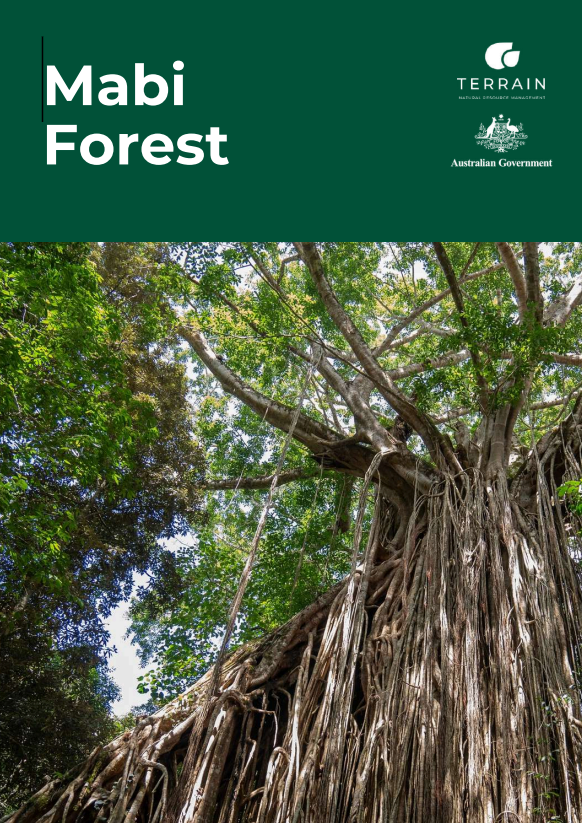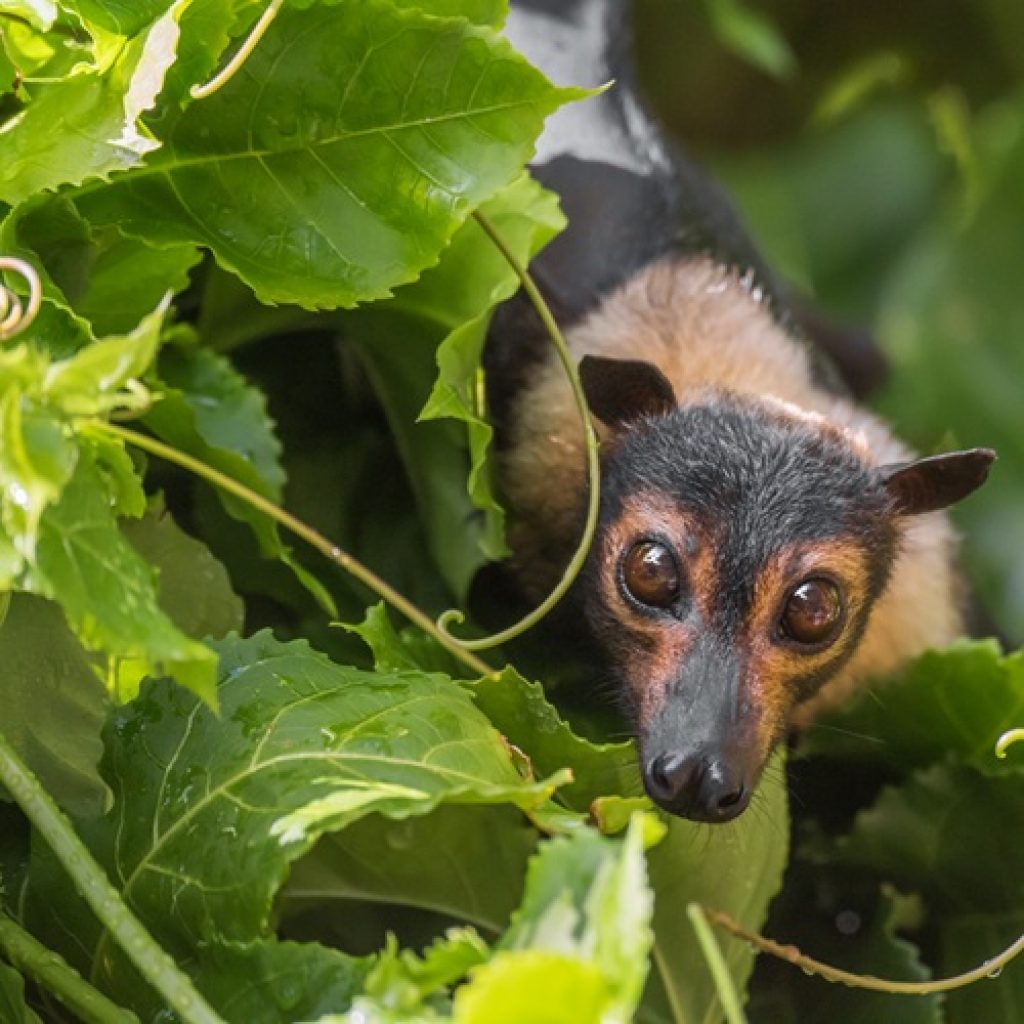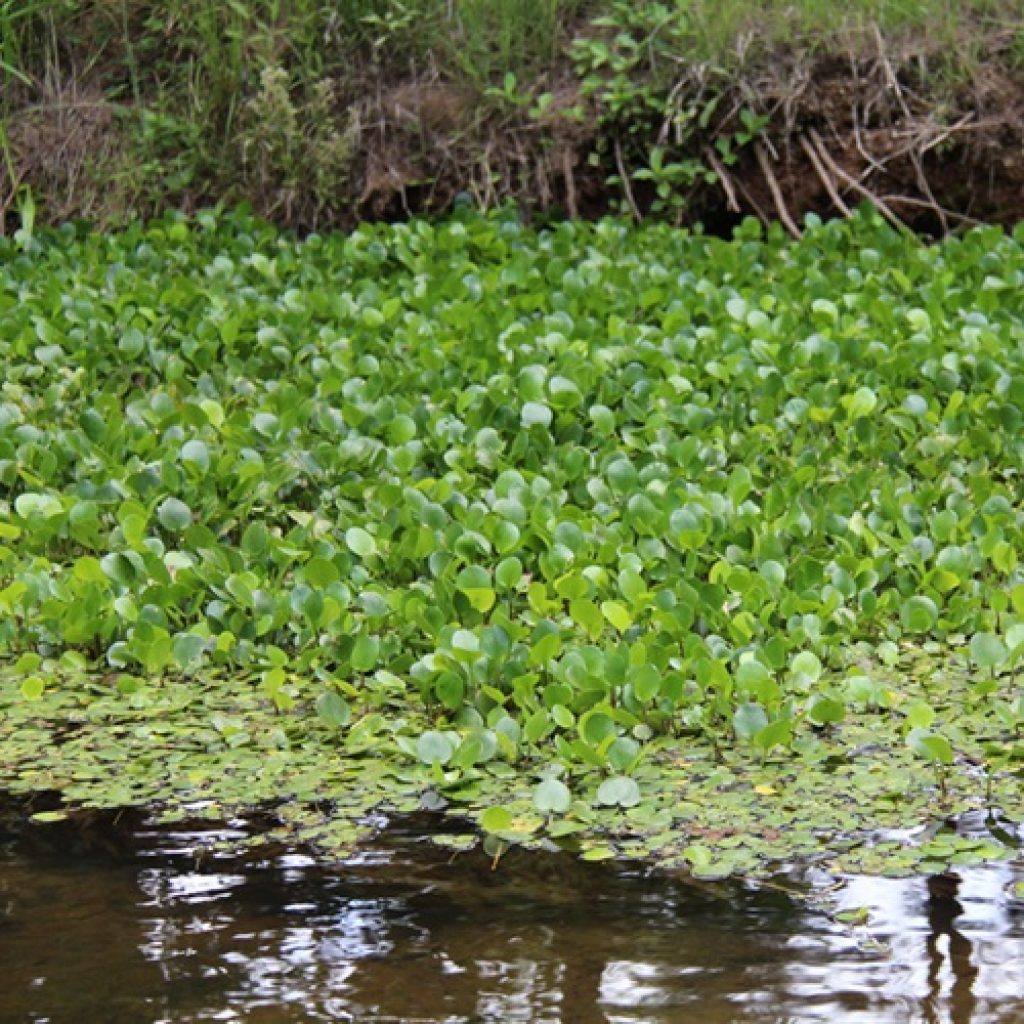RESTORING MABI FOREST
NEW INFORMATION BOOKLET
AUGUST 2025
One of Australia’s most unique and endangered ecosystems, Mabi Forest, has largely disappeared. Landholders can play a critical role in conservation efforts.
Mabi Forest is a critically endangered forest type that is only found on the Atherton Tablelands. It is a semi-evergreen forest that occurs on fertile basalt soils in upland areas where the rainfall is below 1600mm.
This type of forest is home to a high diversity of plants and animals but due to historical land clearing – for timber and later for agriculture – there is now less than four per cent of original Mabi Forest standing. Collectively, that’s about 900 hectares and most of this is in isolated fragments.
Terrain NRM is working with partners to improve the condition of Mabi Forest in the Atherton region through the ‘Forest Resilience’ project. As part of this project, Barron Catchment Care has been funded to work with landholders in the Atherton-Yungaburra area to treat Turbina vine in 70 hectares of Mabi forest. The vine is a fast-growing and aggressive climber that was identified as a primary threat to Mabi forest in this area. Terrain has also funded a Reforest-led revegetation project at Wongabel on land bordering Mabi Forest.
The Forest Resilience project is funded by the Australian Government’s Saving Native Species program.
DOWNLOAD OUR FREE MABI FOREST BOOKLET HERE
If you live in or near Mabi Forest, there are things you can do to help:
- Remove weedy species from your property.
- Don’t dump garden waste at the edges of forest.
- Keep stock away from remnant Mabi Forest.
- Limit tracks through the forest.
- Consider placing any Mabi Forest on your property under a voluntary conservation agreement.
- Extend Mabi Forest on your property through restoration planting to help buffer and reconnect pockets of remnant forest. Talk to your local landcare group, e.g. Barron Catchment Care, TREAT or the Tree Kangaroo
and Mammal Group. - Financial incentives may be available to landholders restoring endangered forest types. Talk to us at Terrain NRM. Incentives include emerging biodiversity credit schemes, such as Cassowary Credits, which reward landholders for undertaking restoration activities.

RELATED NEWS
Powerhouse Pollinators
 admin@terrain
admin@terrain
 September 30, 2025
September 30, 2025
Biosecurity Risks
 admin@terrain
admin@terrain
 September 22, 2025
September 22, 2025
It’s Baby Bat Season
 admin@terrain
admin@terrain
 September 15, 2025
September 15, 2025






























